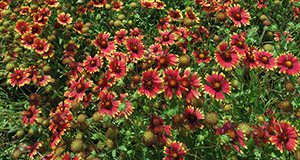Climate, plant communities, and timing of floral resources differ significantly across Florida, which means that management of European honey bee colonies in Florida differs as well. This 8-page fact sheet written by James D. Ellis, Mary C. Bammer, and William H. Kern and published by Department of Entomology and Nematology outlines a management calendar created for Florida beekeepers. It is specific to region (north, central, and south Florida) and month and includes recommendations for major management considerations like when to treat for parasites or pathogens and when to feed colonies or harvest honey. This management calendar, while not exhaustive, is a valuable reference or starting point for honey bee colony management in Florida.
http://edis.ifas.ufl.edu/in848
Tag: Mary C. Bammer
A Guide to Planting Wildflower Enhancements in Florida
The establishment of native wildflower plantings in Florida can benefit agricultural producers as well as native pollinators and other beneficial insects. Wildflowers provide forage and nesting sites for bees, butterflies, and other pollinators, increasing wild bee numbers across the farm, and increasing natural enemies of insect pests. This 6-page fact sheet written by Mary C. Bammer, Josh Campbell, Chase B. Kimmel, James D. Ellis, and Jaret Daniels and published by the UF/IFAS Department of Entomology and Nematology discusses choosing the right mix of native plant species to benefit many pollinator species, as well as proper site selection, planting practices, and weed control techniques. Wildflower plots are practical to manage, maximize benefits to wildlife, and fit well into overall agricultural operation management practices.
http://edis.ifas.ufl.edu/in1180

